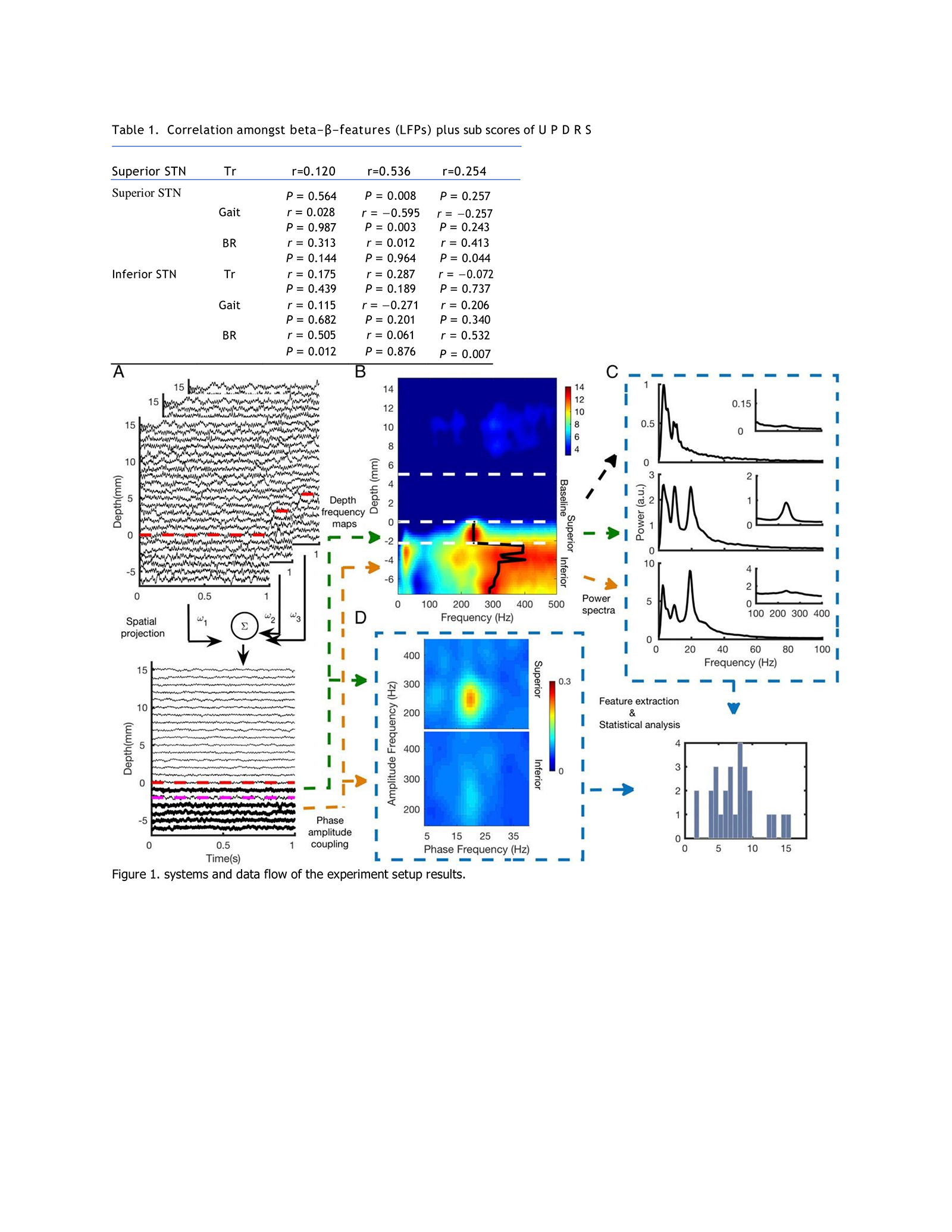Category: Surgical Therapy: Parkinson's Disease
Objective: To examine the behavioral-activity within sub bands of β-beta-oscillated local field potentials(‘LFP’) acquired through microelectrode recording(MER) from STN sub areas offer distinctive neuro-electro physiological data/information of Parkinson`s motoric subtypes.
Background:
Even though Parkinson disease cardinal motor symptoms sub-types, e.g., dominant tremor, postural instability and gait difficulty(PIGD), also axial freezing of gait(FoG) and speech had specified, based on features since long (circa ~3 and ½ decades), there are no fundamental neuronal correlates of these clinical/diagnostic sub types . Available data is also very sparse or scanty (even scarcy) in connection with neuro-electro physiological defects in STN which likely go with ‘symptom-severity’ or the PD-phenotype.
Method:
25 PDs patients (n=25) were recruited in this study. Subjects with PD of >5 yrs, good response to L-dopa, H&Yscore of<4 with normal cognition were qualified for surgery. Surgery was planned using CRW frame and MRI protocol with 5channel Frame link software. MER was done in all 25PDs (STN±10mm). Last target range was basedon effects and dyskinesias of macro stimuli proved by MRI post op.Fig2shows systems and data flow and Table 1. Correlation amongst beta-β-features (LFPs) plus sub scores of U P D R S
Results:
25PDs were found distinct signature-patterns among DT and PIGD(n=13,12) cohorts in high freq-oscillations(‘hFO’) plus their non-linear interactions thru β-band in greater, lesser STN zone. Largely, in STN >areas, strength of slow-hFO(sHFO,200–260Hz), amplitudes coupling through β-phase were much deeper in DT cohort. Worse zone of STN showed fast hFOs (f-hFOs 260–450Hz), that get a >> base-frequency in ‘PIGD’ cohort. The ‘cross band coupling’ amid f-HFO, β in mediocre STN zone was substantially deeper in ‘PIGD’ cohort. Fndings show that STN field potentials ‘spatial spectra dynamics’ be utilized as empirical approach to discern the PD‘motoric sub-types’, provide possibilities pro the intra op clarification of STN ‘oscillatory-dynamics’. These very confined signature-patterns could be applied as actual tools/utilities for neuro modulation technologies in the future.
Conclusion: These remarks may cause the growth of detection and stimulus methods aiming the STN sub territory for the individual DBS.
References: 1. I.Telkes, et.al.,Local field potentials of subthalamic nucleus contain electrophysiological footprints of motor subtypes of Parkinson’s disease, PNAS,Vol. 115, No.36, Pp:E8567–E8576, 2018.
To cite this abstract in AMA style:
L. Neerati, G. Rama Raju, R. Venkateshwara. Microelectrode recording with subthalamic nuclei deep brain stimulation encompass neuro-electro physiological beta oscillations footmarks in Parkinson`s cardinal motor symptoms sub-types [abstract]. Mov Disord. 2023; 38 (suppl 1). https://www.mdsabstracts.org/abstract/microelectrode-recording-with-subthalamic-nuclei-deep-brain-stimulation-encompass-neuro-electro-physiological-beta-oscillations-footmarks-in-parkinsons-cardinal-motor-symptoms-sub-types/. Accessed April 3, 2025.« Back to 2023 International Congress
MDS Abstracts - https://www.mdsabstracts.org/abstract/microelectrode-recording-with-subthalamic-nuclei-deep-brain-stimulation-encompass-neuro-electro-physiological-beta-oscillations-footmarks-in-parkinsons-cardinal-motor-symptoms-sub-types/

